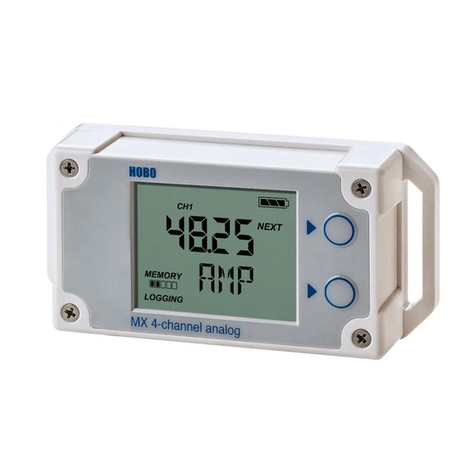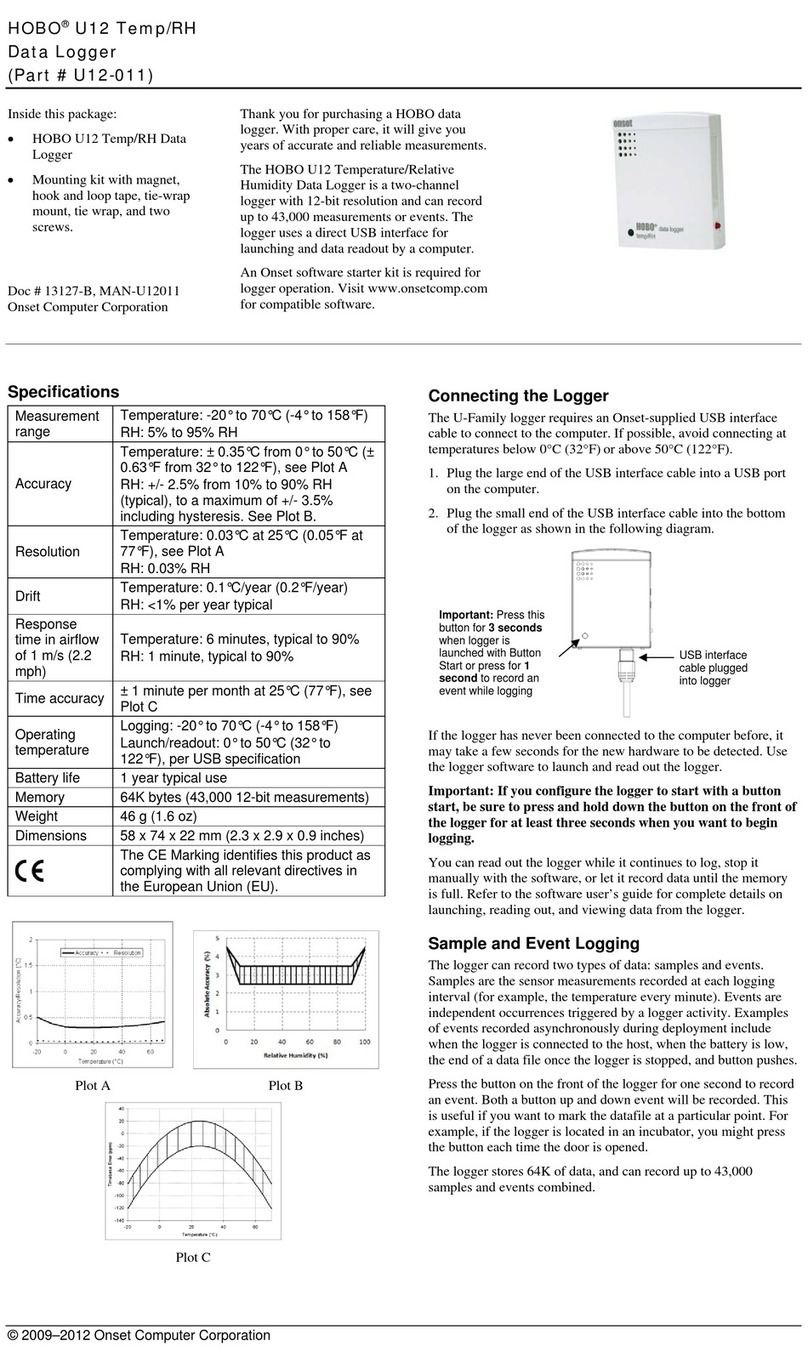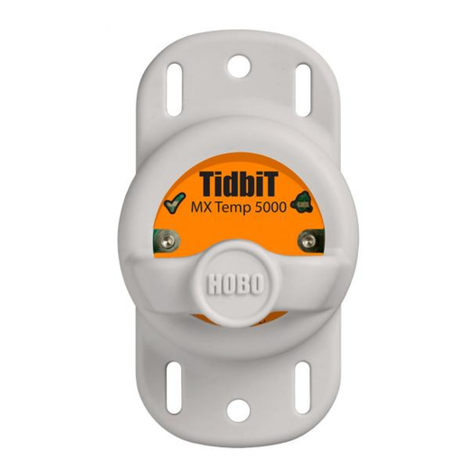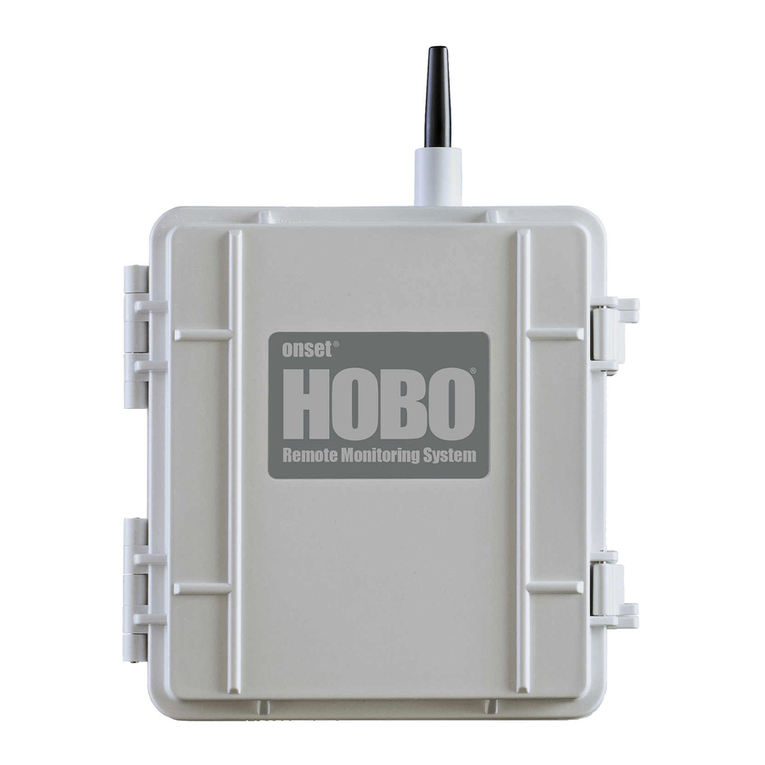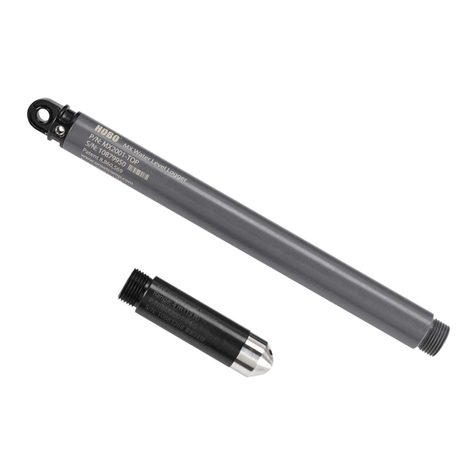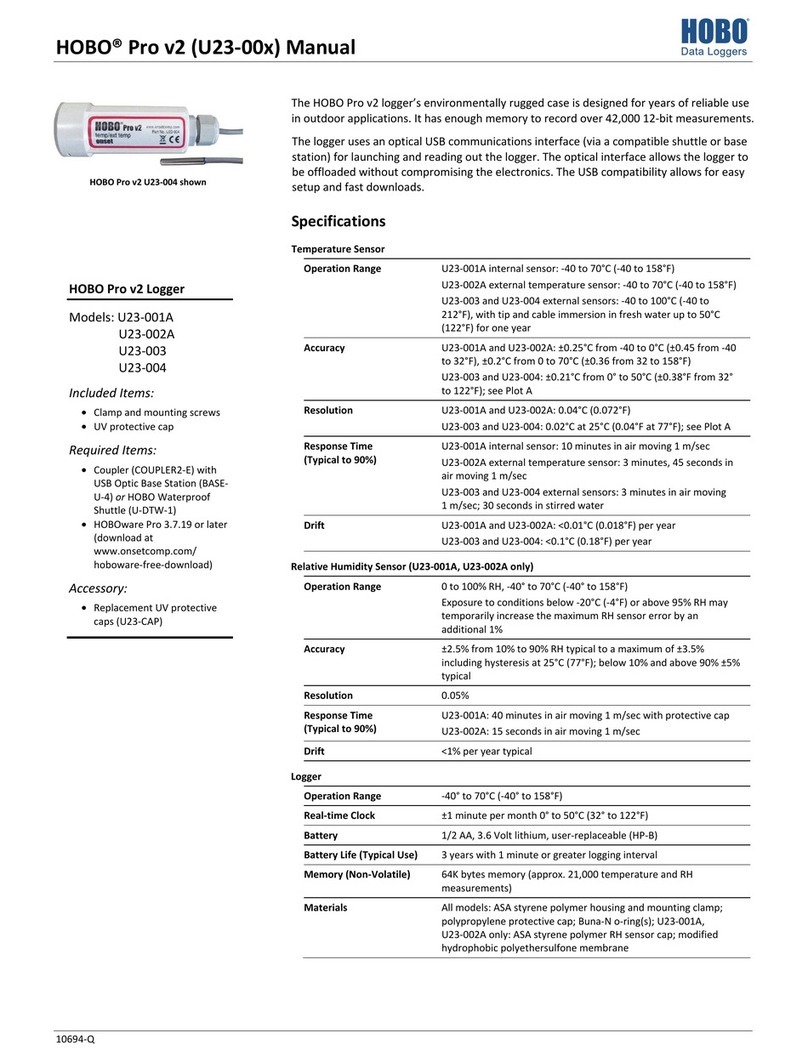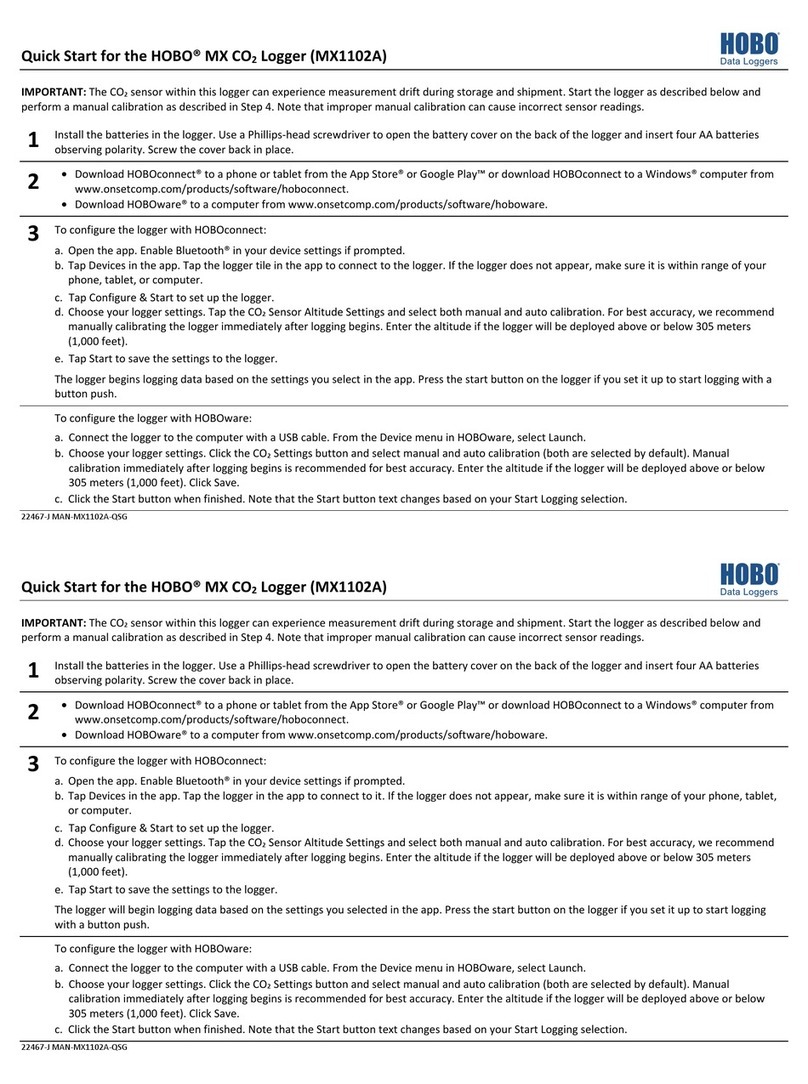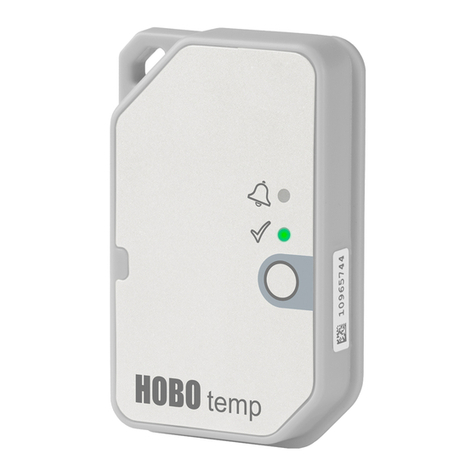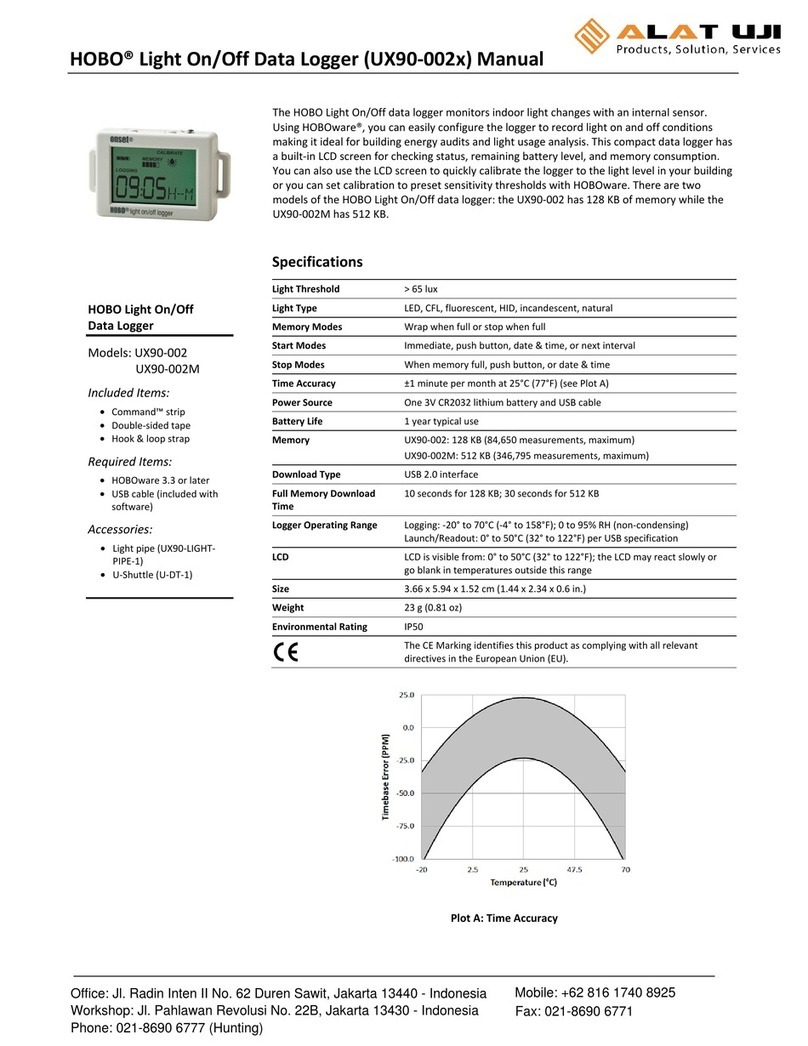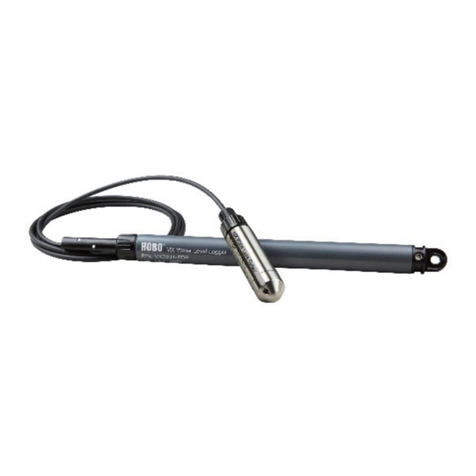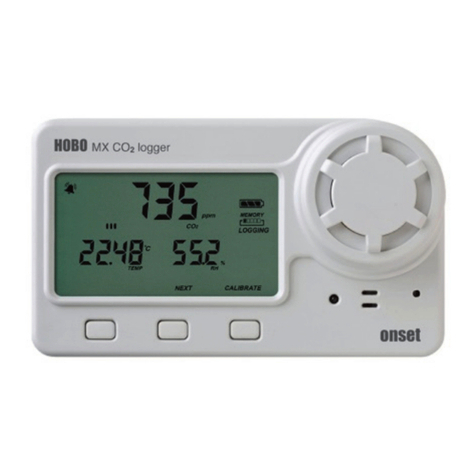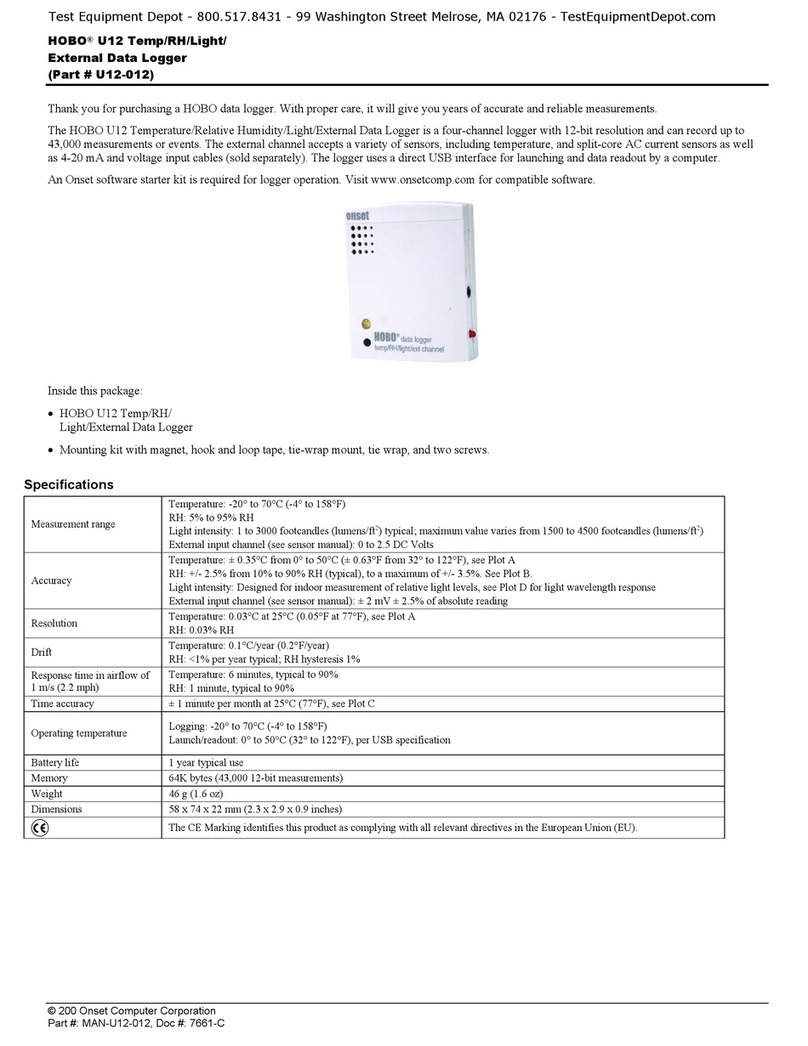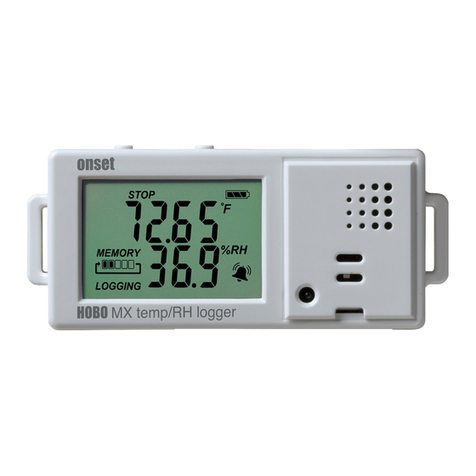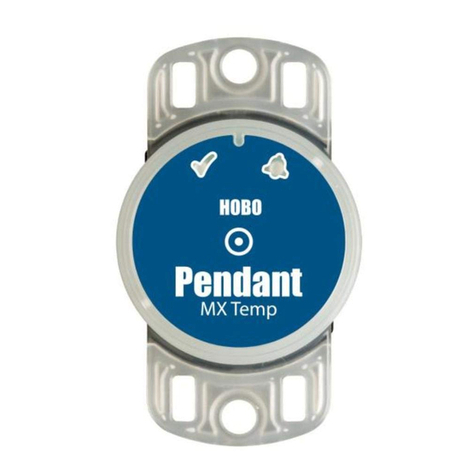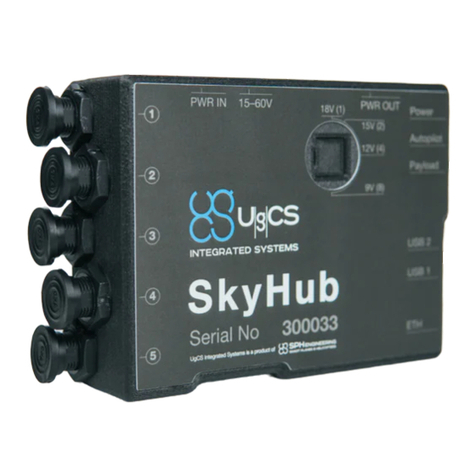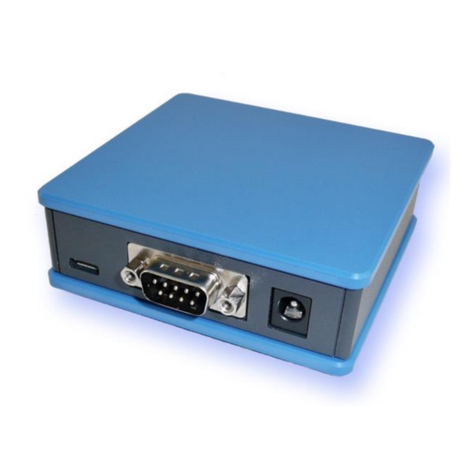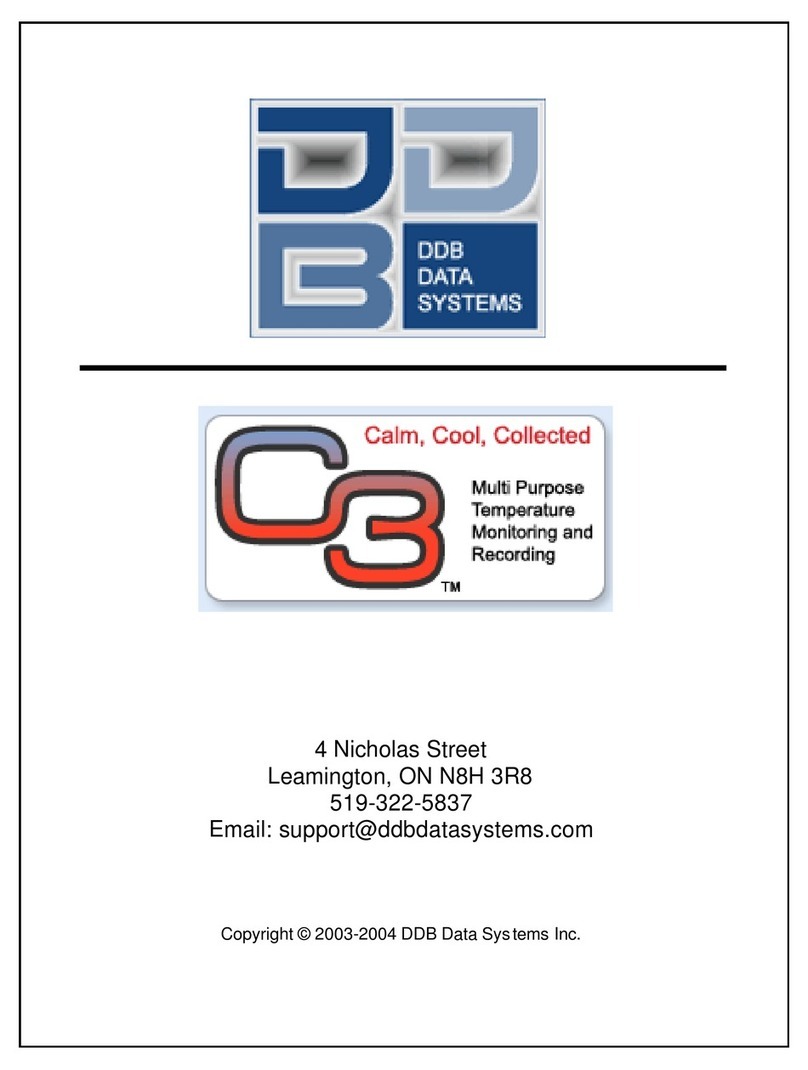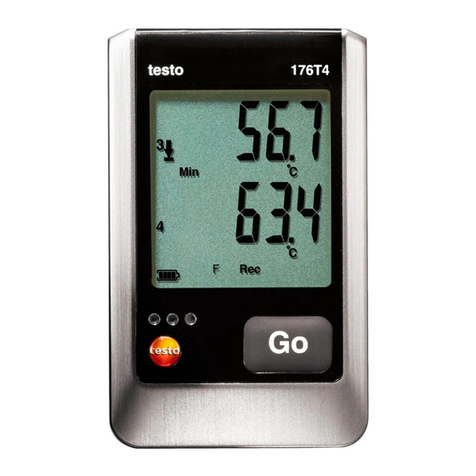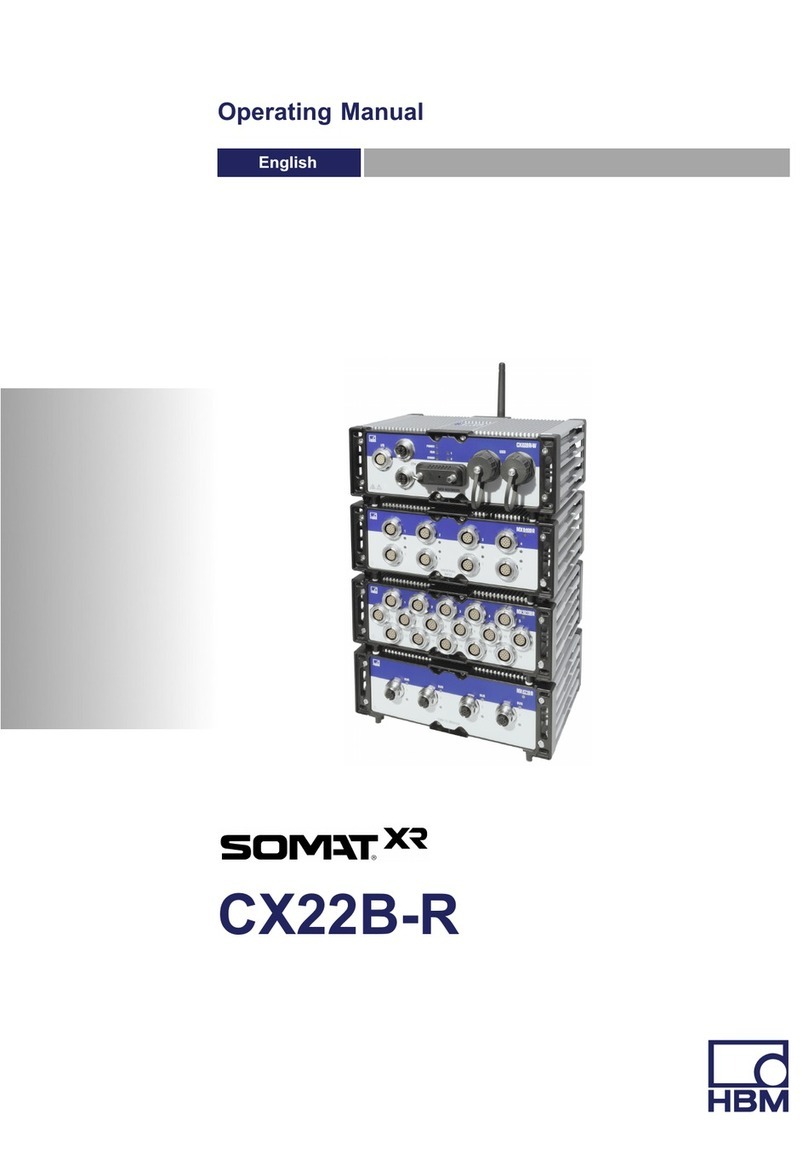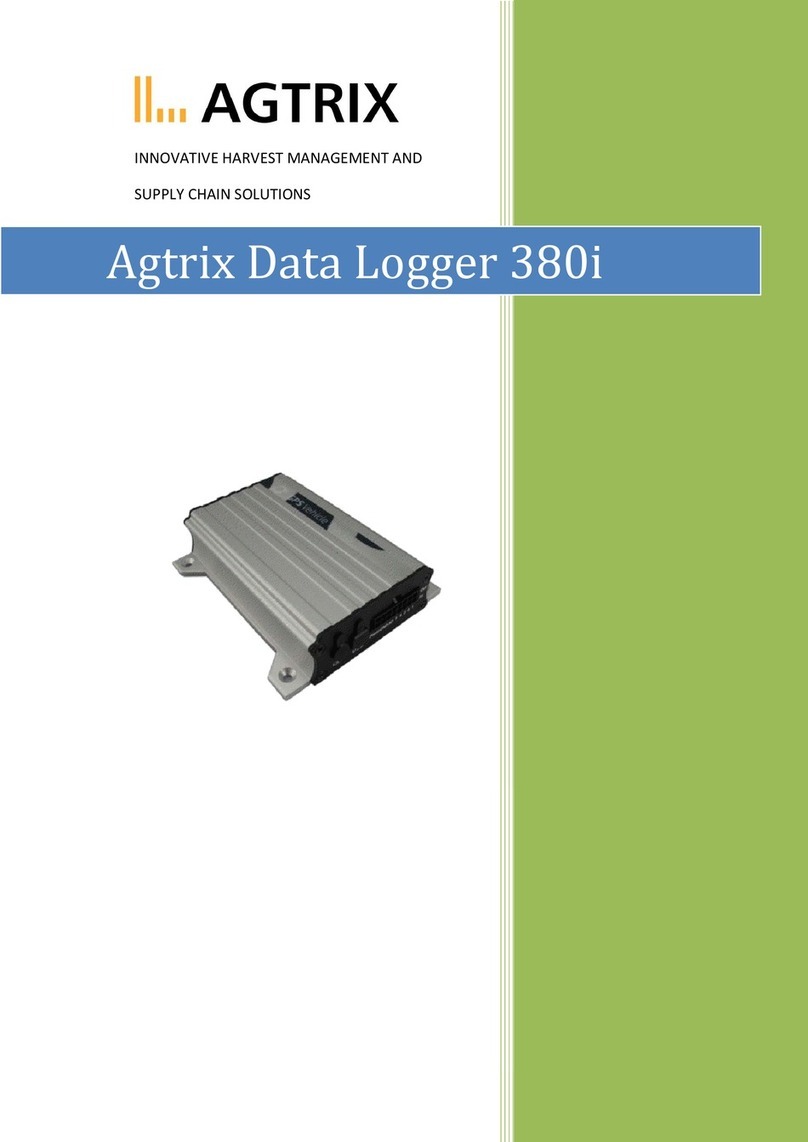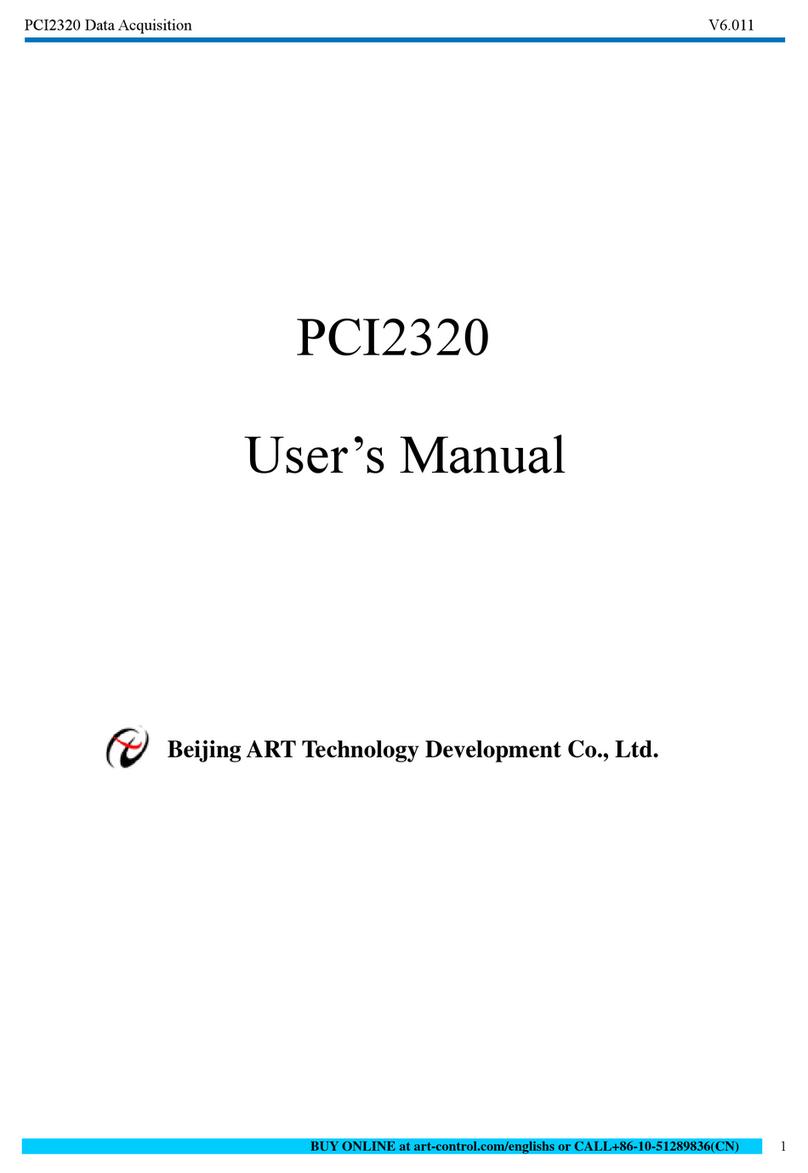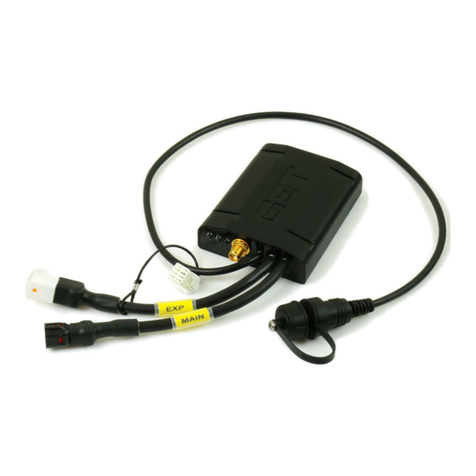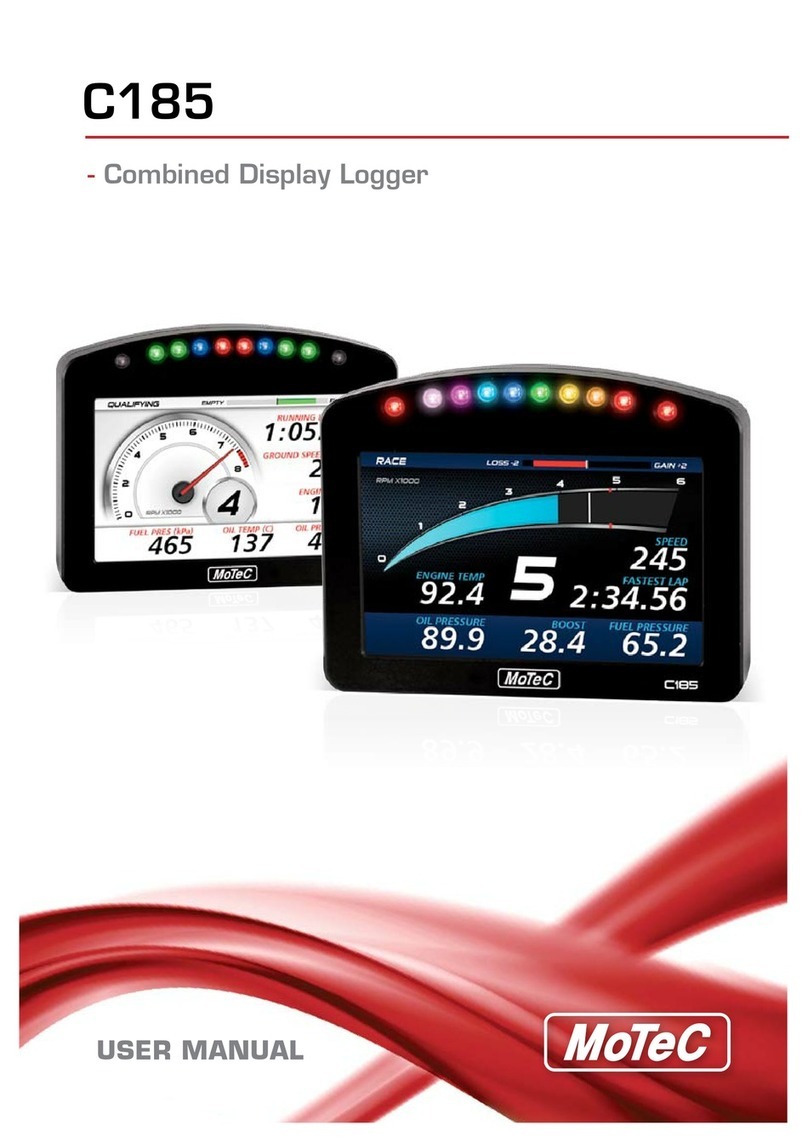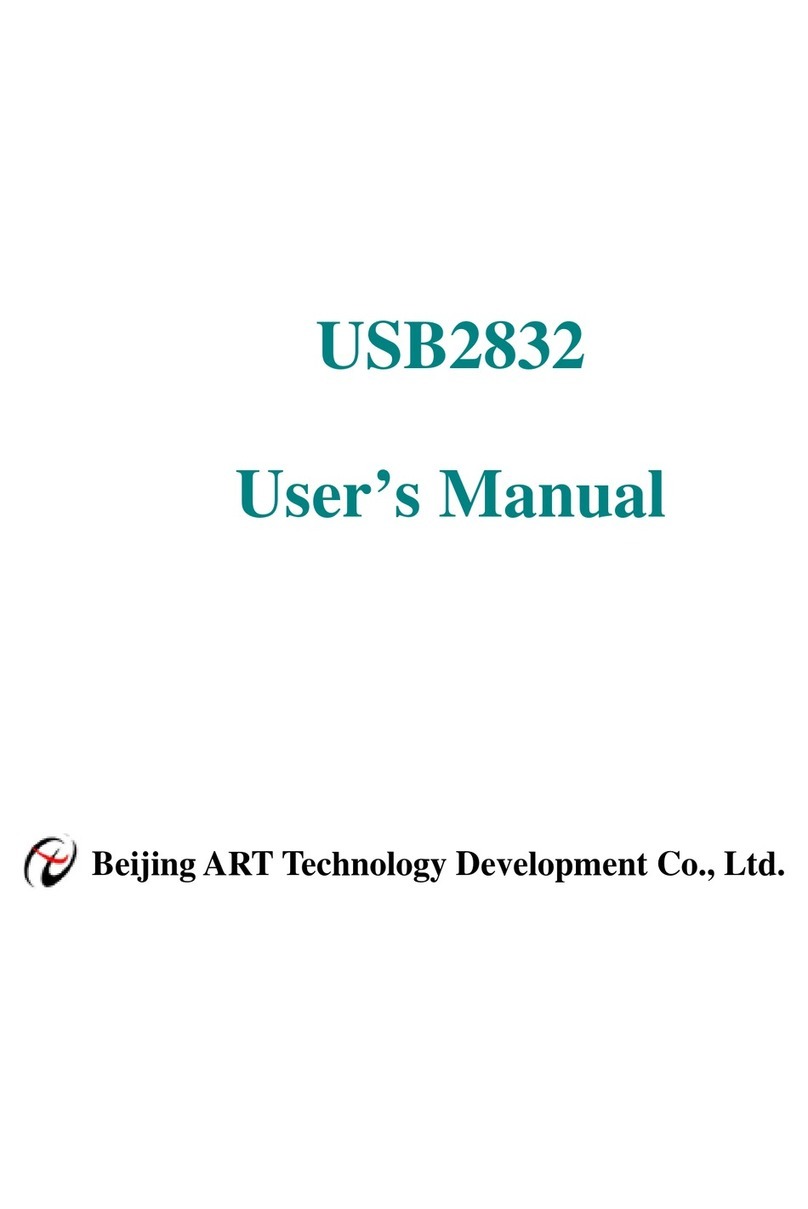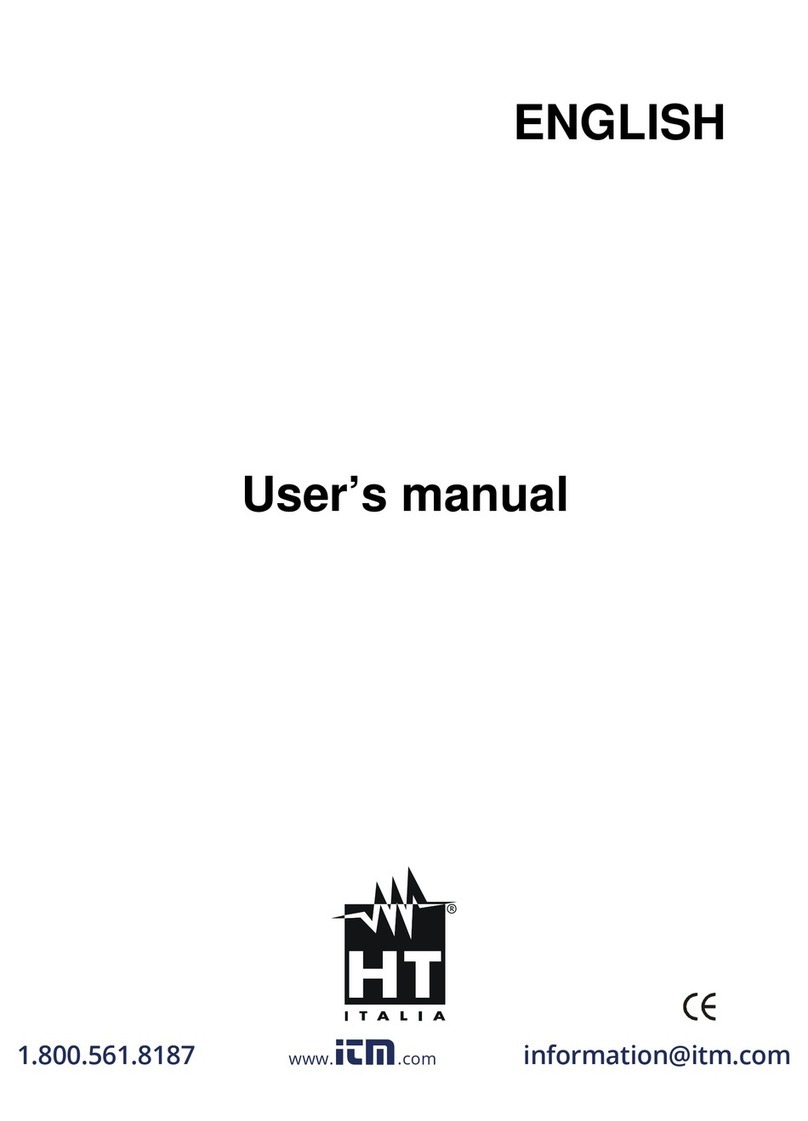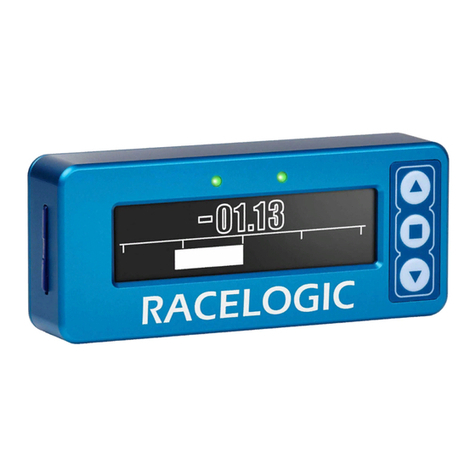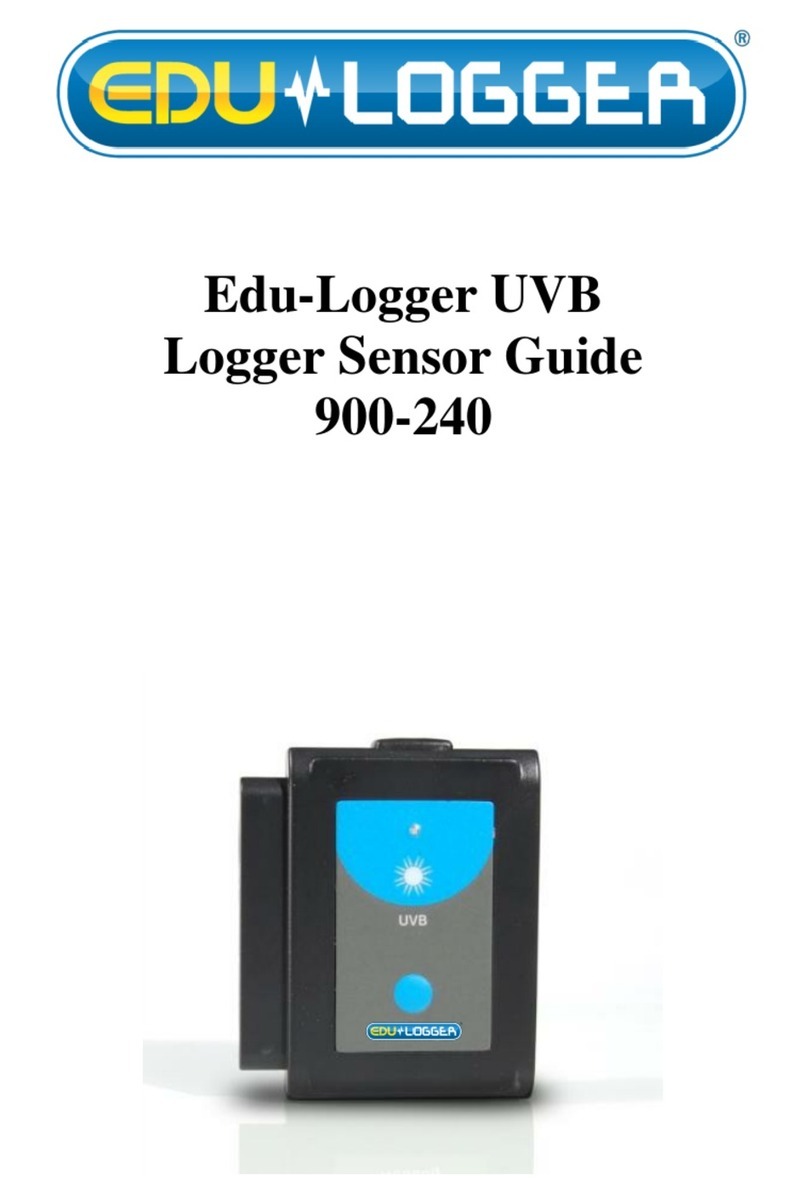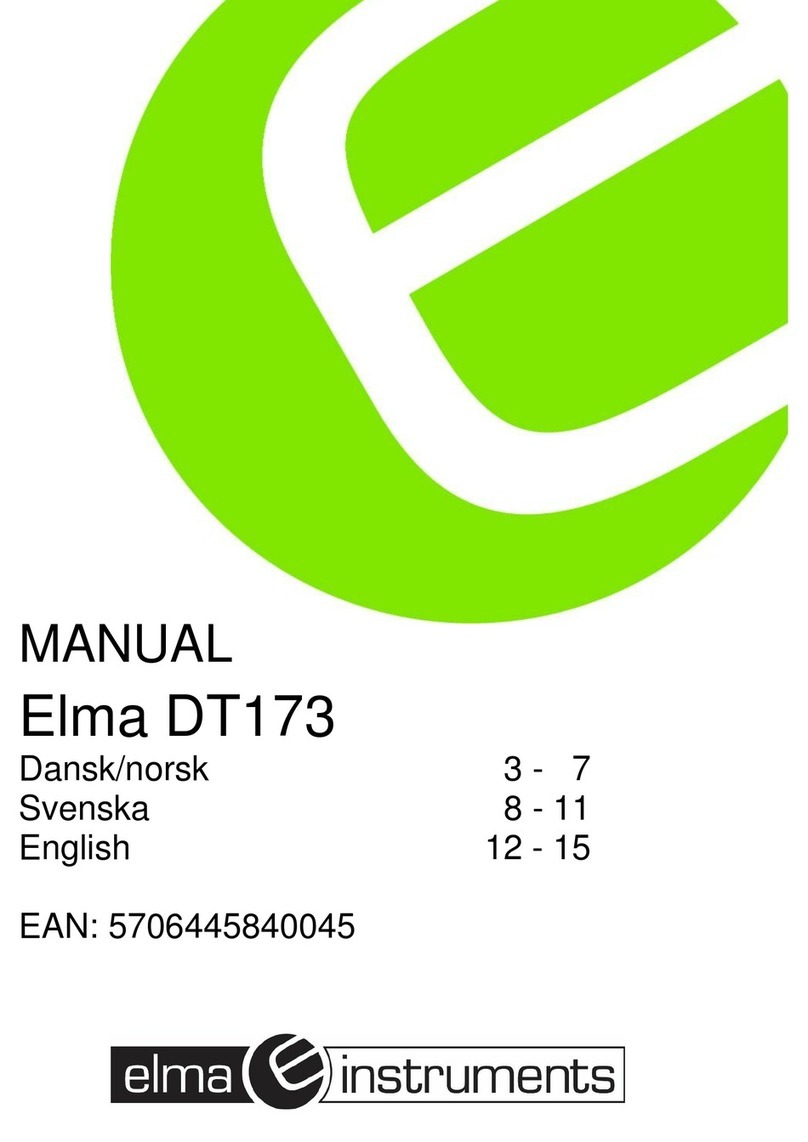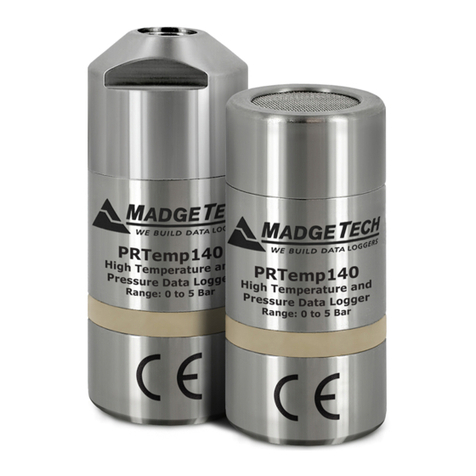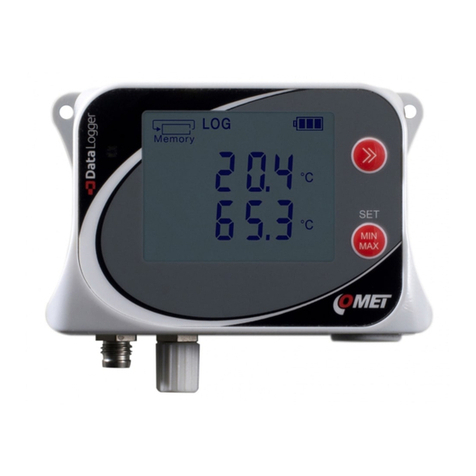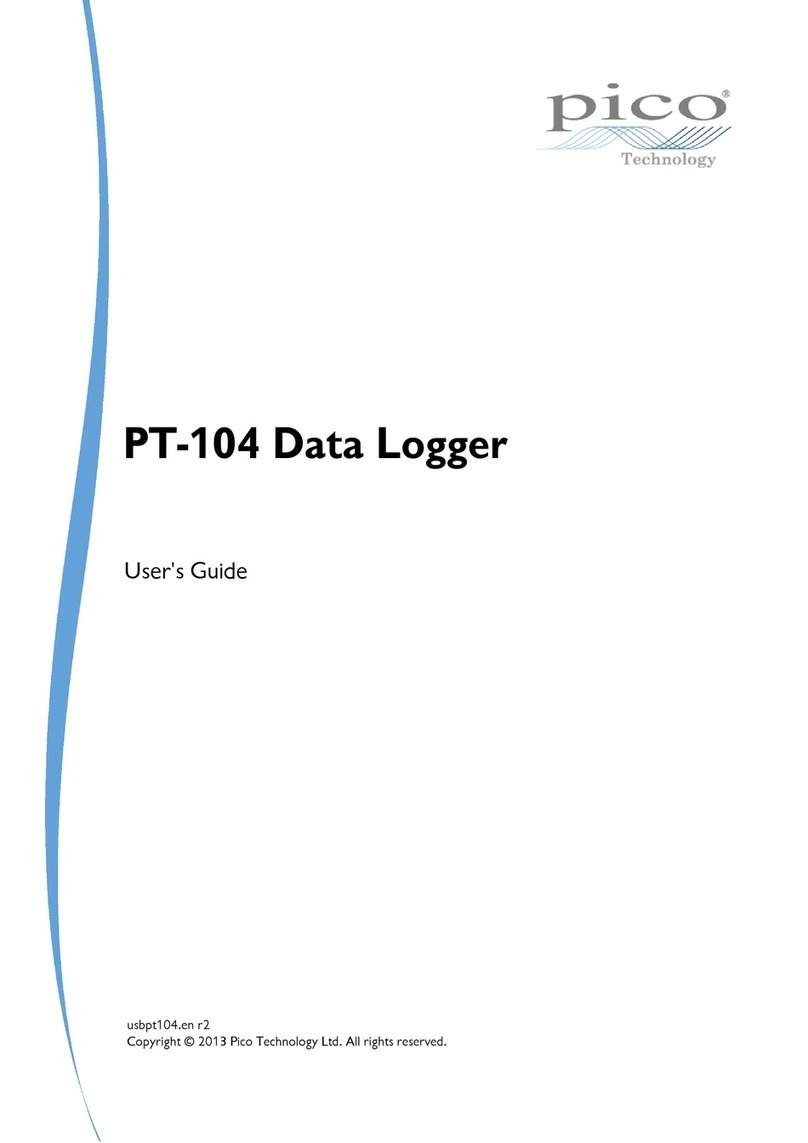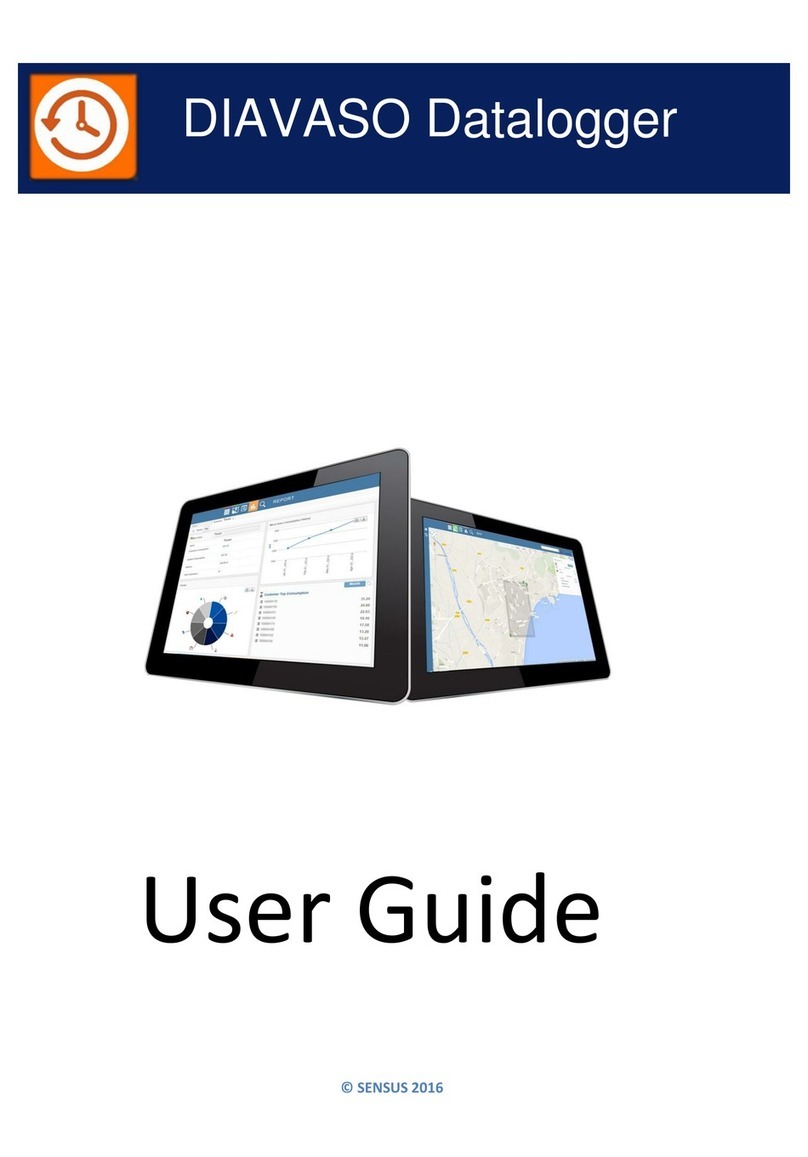
- 4 -
•Do not attempt to open the logger case or sensor
housing.
Disassembling of the logger case or sensor
housing may cause serious damage to the sensor
and logger electronics. There are no user-
serviceable parts inside the case. Contact Onset
technical support if your logger requires servicing.
The Battery
Battery Life
The battery life of the logger should be three years or
more. Actual battery life is a function of the number of
deployments, logging interval, and operation/storage
temperature of the logger. Frequent deployments with
logging intervals of less than one minute, and continuous
storage/operation at temperatures above 35°C, will result
in significantly lower battery life. For example, continuous
logging at a one-second logging interval will result in a
battery life of approximately one month.
To obtain a three-year battery life, a logging interval of
one minute or greater should be used and the logger should
be operated and stored at temperatures between 0° and
25°C (32° and 77°F).
Battery Voltage
The logger can report and log its battery voltage. If the
battery falls below 3.1 V, the logger will record a “bad
battery” event in the datafile. If the datafile contains “bad
battery” events, or if logged battery voltage repeatedly
falls below 3.3 V, the battery is failing and the logger
should be returned to Onset for battery replacement.
Replacing the Battery
To have your logger’s battery replaced, contact Onset or
your place of purchase for return arrangements. Do not
attempt to replace the battery yourself. Severe damage to
the logger will result if the case is opened without special
tools, and the warranty will be voided.
WARNING: Do not cut open, incinerate, heat above
100°C (212°F), or recharge the lithium battery. The battery
may explode if the logger is exposed to extreme heat or
conditions that could damage or destroy the battery case.
Do not dispose of the logger or battery in fire. Do not
expose the contents of the battery to water. Dispose of the
battery according to local regulations for lithium batteries.
Specifications
Sensor
Conductivity Temperature
Calibrated Range Low Range: 0 to
1,000 µS/cm
Full Range: 0 to
10,000 µS/cm
5° to 40°C (41° to
104°F)
Extended Range Low Range: 0 to
2,500 µS/cm
Full Range: 0 to
15,000 µS/cm
0° to 40°C (32° to
104°F)
Accuracy (in
calibrated range) 3% of reading, or 5
µS/cm, whichever is
greater 0.1°C (0.2°F)
Resolution 1 µS/cm 0.01°C (0.02°F)
Response time 1 second to 90% of change
Logger
Memory
18,500 temperature and conductivity
measurements when using one
conductivity range; 14,400 sets of
measurements when using both
conductivity ranges (64kbytes total
memory)
Sample rate 1 second to 18 hrs, fixed or multiple-rate
sampling with up to 8 user-defined
sampling intervals
Battery 3.6 Volt lithium battery
Battery life 3 years (at 1 minute logging)
Maximum Depth 70 m (225')
Operating Range 0° to 50°C (32° to 122°F) - non freezing
Weight 193 gm (6.82 ounces), buoyancy in
freshwater: -59.8 gm (-2.11 ounces)
Size 3.18 cm diameter x 16.5 cm, with 6.3 mm
mounting hole (1.25" diameter x 6.5", ¼”
hole)
Wetted Housing
Materials
Delrin, epoxy, stainless steel,
polypropylene, Buna rubber O-ring,
titanium pentoxide (sensor)
The CE Marking identifies this product as
complying with all relevant directives in the
European Union (EU).
© 2010 Onset Computer Corporation. All rights reserved.
Onset, HOBO, and HOBOware are trademarks or registered trademarks
of Onset Computer Corporation covering its data logger products and
configuration/interface software.
All other trademarks are the property of their respective companies.
